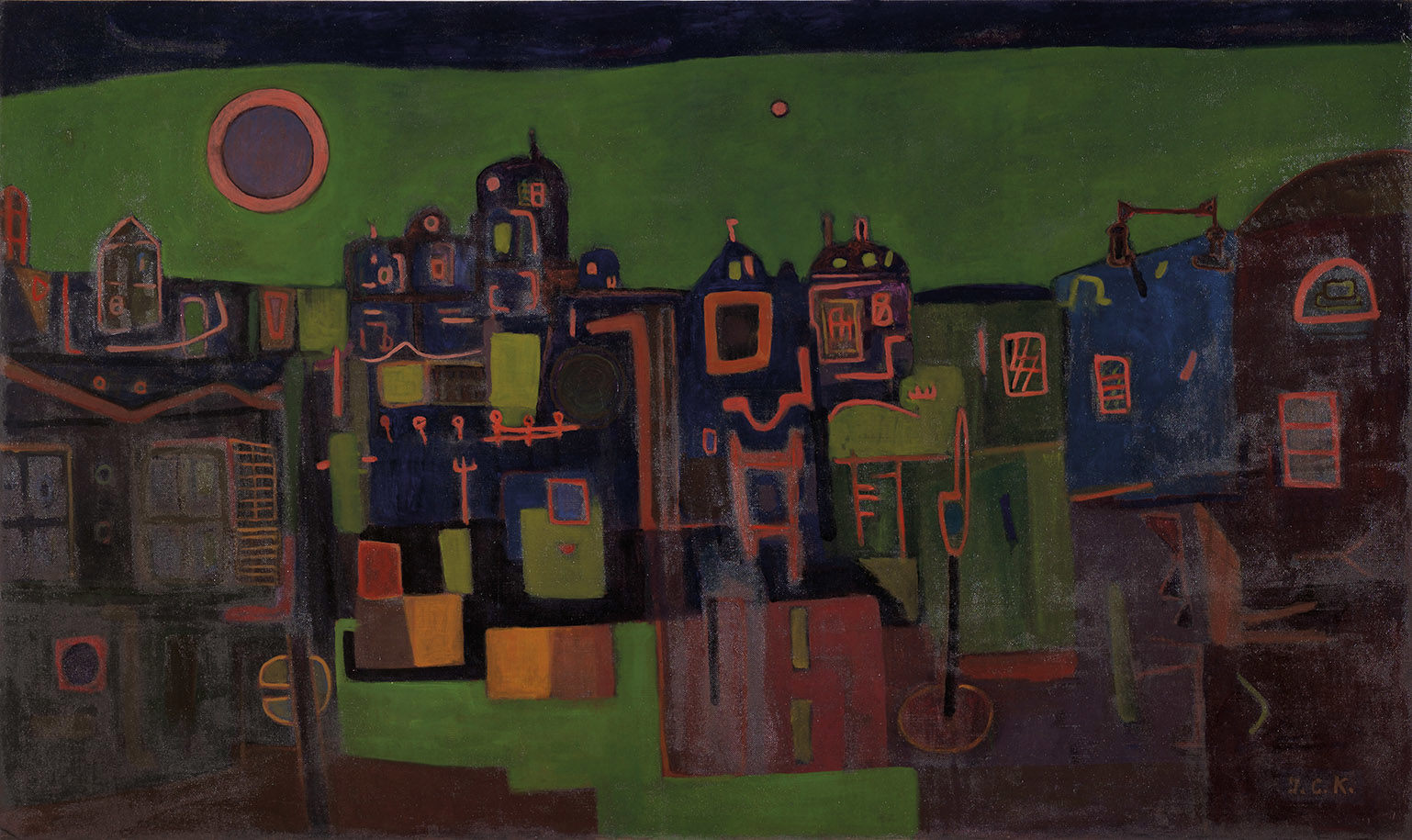- Open Today: 10.00–20.00
- Ticket
- Shop
- Membership
- TR EN

İhsan Cemal Karaburçak, 1897-1970
Abstract Landscape, 1964-1965
Mail and Telegraph School for Higher Education graduate İhsan Cemal Karaburçak, motivated by his interest in contemporary art, took up painting at the École Universelle in Paris in 1930, when he was already in his 30s. However, he was dissatisfied by the school’s strict rules and soon dropped out, choosing instead to study the works of masters such as Paul Cézanne, Paul Gauguin, and Henri Matisse on his own. He developed a visual language based on a carefully designed compositional structure and a limited palette of pure colors. Although his largely abstract works were rooted in reality, with his representational approach involving landscapes and still-lifes, Karaburçak maintained that such references were not very important. He thought instead that art should be a reflection of an artist’s perception of reality.
Karaburçak believed that in order to transform these perceptions into art, an artist needed to engage in constant research, to be in touch with his own society, history, and identity, and to be aware of the international dimensions of contemporary art. He thought that artists should concentrate on improving their own knowledge and experience so that they could make informed, critical judgments, rather than focusing on “missions” like making Turkey a modern country or simply catering to popular tastes. Karaburçak’s repeated assertions that the notions of abstraction, originality, and universality underpinned the art of painting, and that artists needed to be both perceptive and creative, stemmed from his own understanding of the forces that drove modernism.
The artist interprets the traditional use of color with his unique standpoint to illustrate the appearance of an ordinary city street in the evening.
Painting
Oil on fibreboard
Istanbul Museum of Modern Art Collection
Oya – Bülent Eczacıbaşı Donation